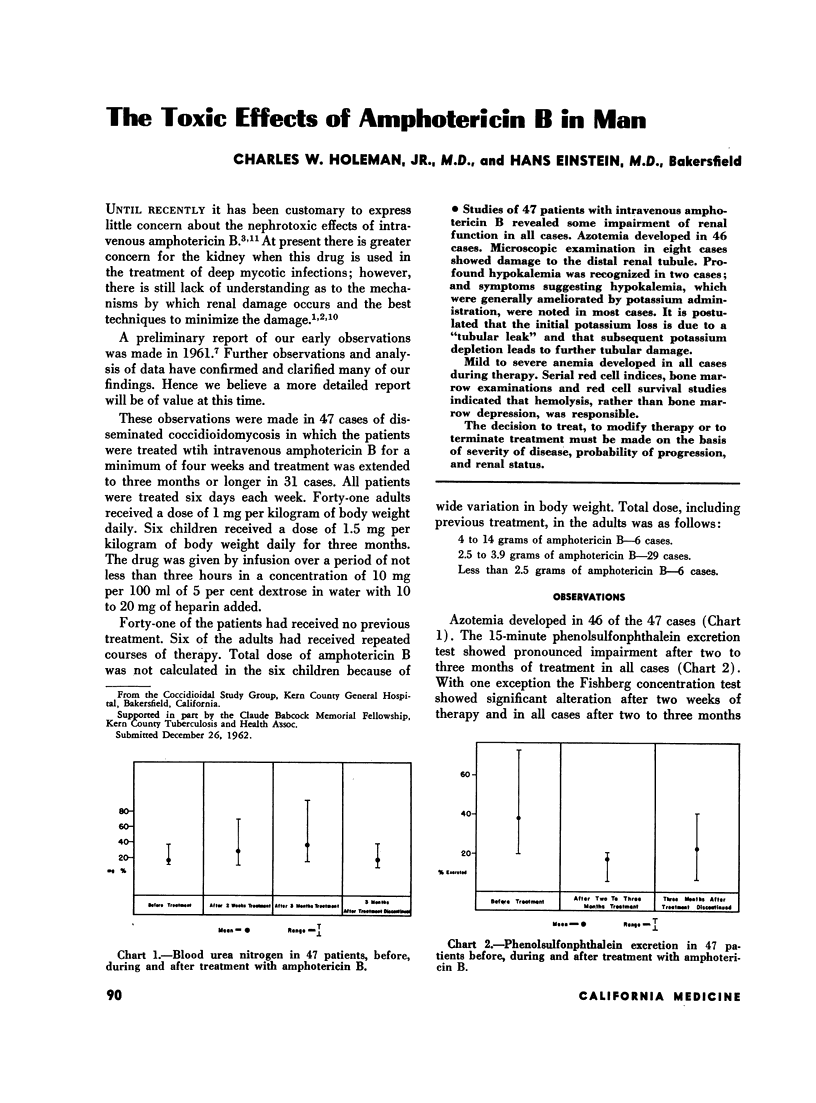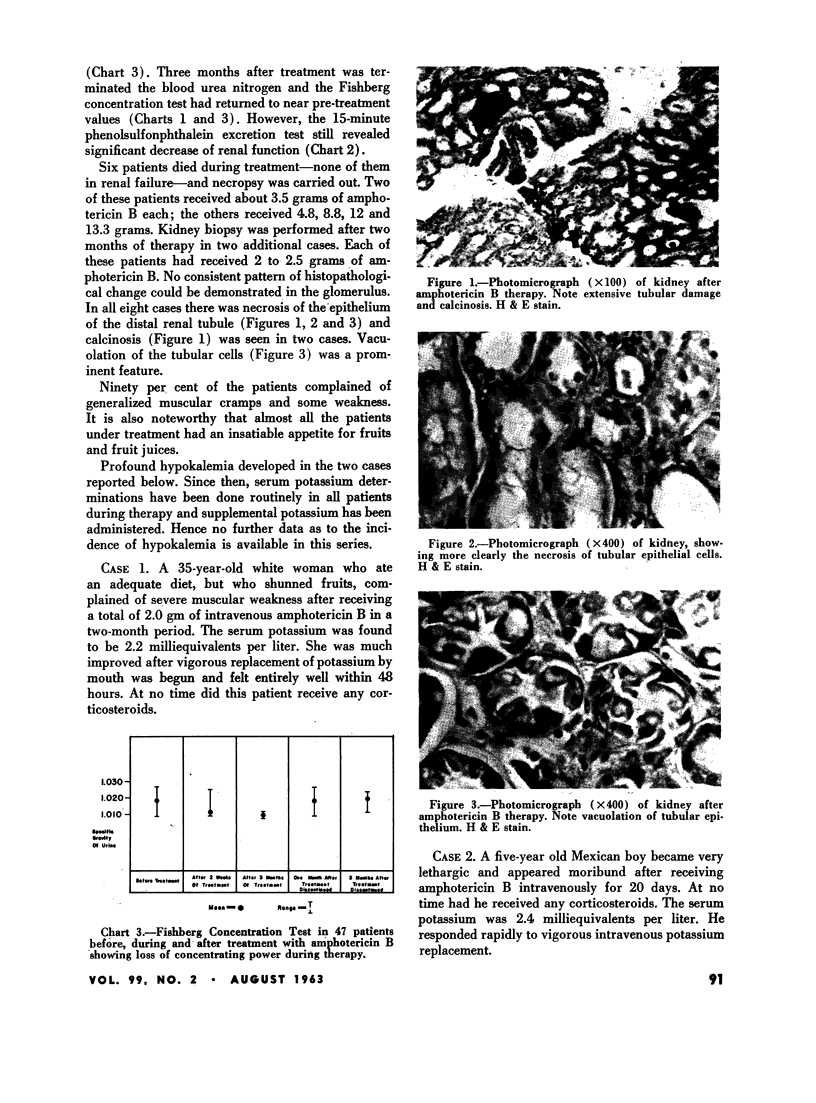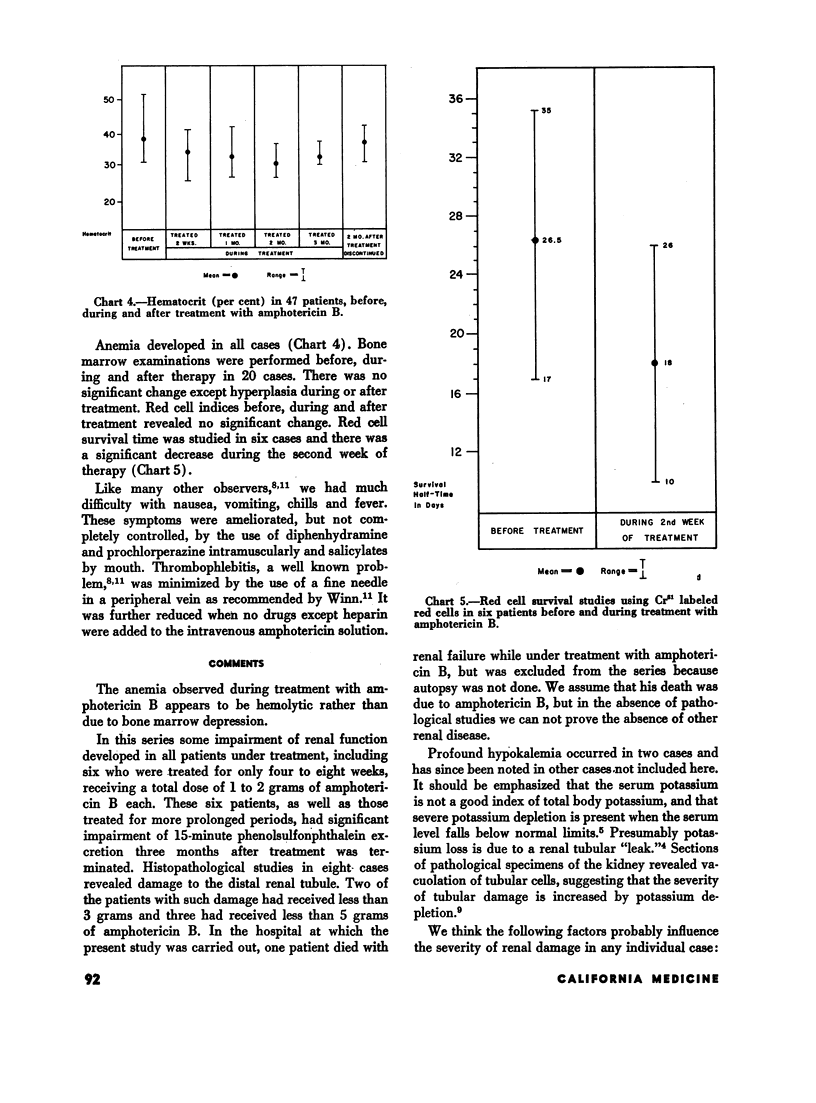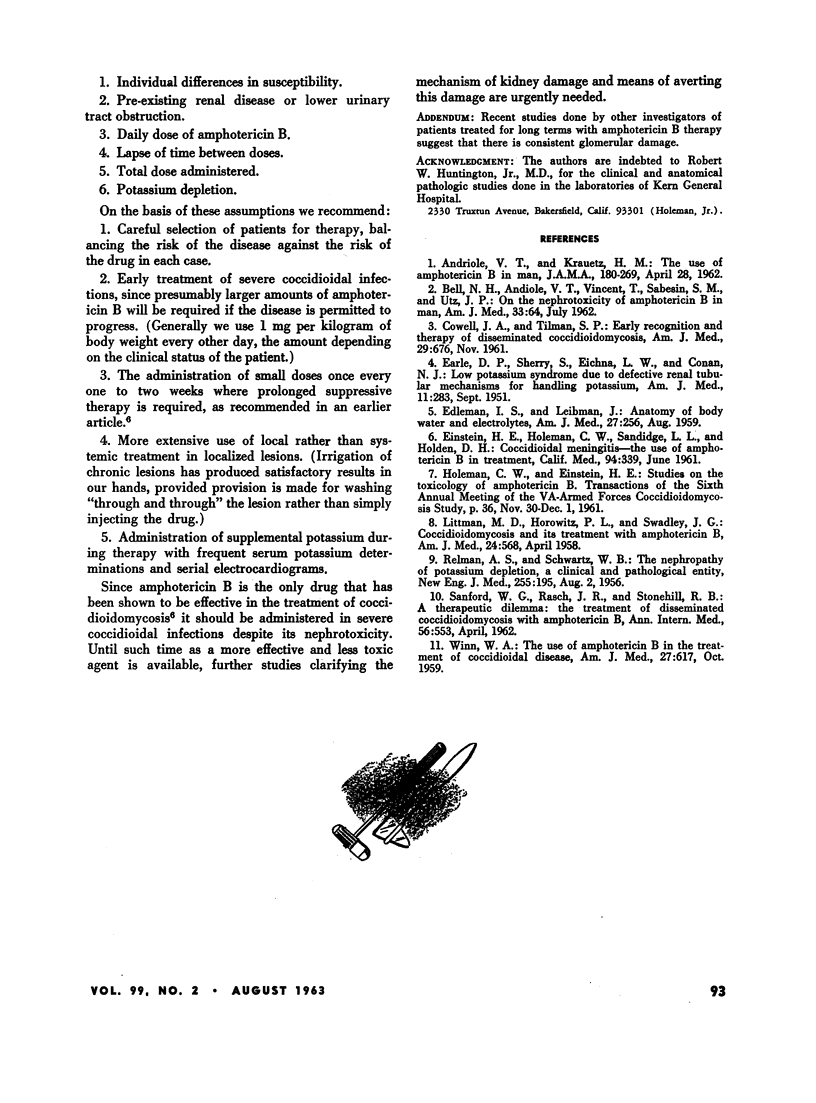Abstract
Studies of 47 patients with intravenous amphotericin B revealed some impairment of renal function in all cases. Azotemia developed in 46 cases. Microscopic examination in eight cases showed damage to the distal renal tubule. Profound hypokalemia was recognized in two cases; and symptoms suggesting hypokalemia, which were generally ameliorated by potassium administration, were noted in most cases. It is postulated that the initial potassium loss is due to a “tubular leak” and that subsequent potassium depletion leads to further tubular damage.
Mild to severe anemia developed in all cases during therapy. Serial red cell indices, bone marrow examinations and red cell survival studies indicated that hemolysis, rather than bone marrow depression, was responsible.
The decision to treat, to modify therapy or to terminate treatment must be made on the basis of severity of disease, probability of progression, and renal status.
Full text
PDF



Images in this article
Selected References
These references are in PubMed. This may not be the complete list of references from this article.
- ANDRIOLE V. T., KRAVETZ H. M. The use of amphotericin B in man. JAMA. 1962 Apr 28;180:269–272. doi: 10.1001/jama.1962.03050170001001. [DOI] [PubMed] [Google Scholar]
- BELL N. H., ANDRIOLE V. T., SABESIN S. M., UTZ J. P. On the nephrotoxicity of amphotericin B in man. Am J Med. 1962 Jul;33:64–69. doi: 10.1016/0002-9343(62)90277-2. [DOI] [PubMed] [Google Scholar]
- EARLE D. P., SHERRY S., EICHNA L. W., CONAN N. J. Low potassium syndrome due to defective renal tubular mechanisms for handling potassium. Am J Med. 1951 Sep;11(3):283–301. doi: 10.1016/0002-9343(51)90166-0. [DOI] [PubMed] [Google Scholar]
- EDELMAN I. S., LEIBMAN J. Anatomy of body water and electrolytes. Am J Med. 1959 Aug;27:256–277. doi: 10.1016/0002-9343(59)90346-8. [DOI] [PubMed] [Google Scholar]
- EINSTEIN H. E., HOLEMAN C. W., Jr, SANDIDGE L. L., HOLDEN D. H. Coccidioidal meningitis. The use of amphotericin B in treatment. Calif Med. 1961 Jun;94:339–343. [PMC free article] [PubMed] [Google Scholar]
- LITTMAN M. L., HOROWITZ P. L., SWADEY J. G. Coccidioidomycosis and its treatment with amphotericin B. Am J Med. 1958 Apr;24(4):568–592. doi: 10.1016/0002-9343(58)90297-3. [DOI] [PubMed] [Google Scholar]
- RELMAN A. S., SCHWARTZ W. B. The nephropathy of potassium depletion; a clinical and pathological entity. N Engl J Med. 1956 Aug 2;255(5):195–203. doi: 10.1056/NEJM195608022550501. [DOI] [PubMed] [Google Scholar]
- SANFORD W. G., RASCH J. R., STONEHILL R. B. A therapeutic dilemma. The treatment of disseminated coccidioidomycosis with amphotericin B. Ann Intern Med. 1962 Apr;56:553–563. doi: 10.7326/0003-4819-56-4-553. [DOI] [PubMed] [Google Scholar]
- WINN W. A. The use of amphotericin B in the treatment of coccidioidal disease. Am J Med. 1959 Oct;27:617–635. doi: 10.1016/0002-9343(59)90046-4. [DOI] [PubMed] [Google Scholar]





